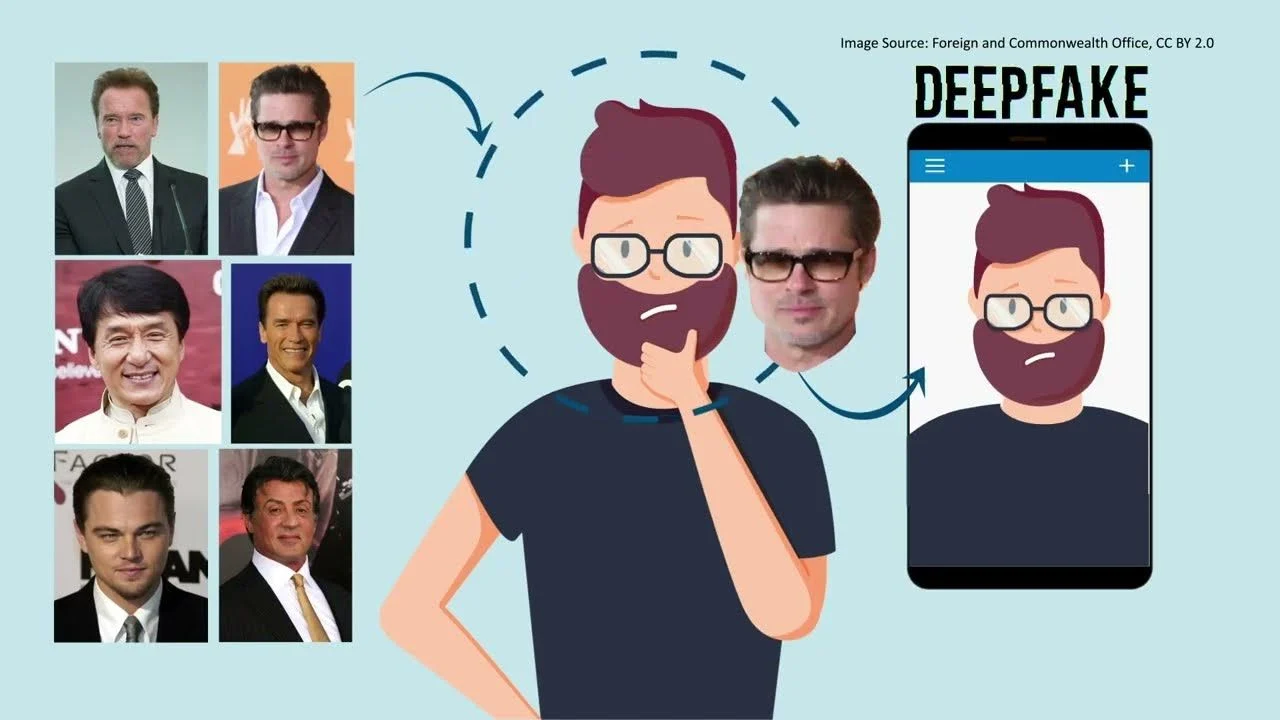
Decoding the Enigma: Exploring the World of Deep Fake Technology
In a world where seeing is believing, the advent of deep fake technology has cast long shadows on this age-old adage, challenging our perceptions of reality. As a technology enthusiast, I’ve been captivated by the rapid evolution of deep fakes. This term amalgamates ‘deep learning’ and ‘fake’, and signifies a significant leap in how we create and perceive digital content. This exploration aims to demystify the complexities surrounding deep fake technology, unraveling its workings, applications, and the myriad ethical considerations it brings to the forefront.
Introduction to Deep Fake Technology
The term “deep fake” has burgeoned into the lexicon of technological advancements with a velocity that is both exhilarating and, to a certain extent, alarming. At its core, deep fake technology leverages sophisticated artificial intelligence (AI) and machine learning algorithms to create or manipulate video and audio content with a degree of realism hitherto unparalleled. The implications of such technology are profound, enabling the creation of content that blurs the lines between reality and fabrication.
Embarking on this journey, it’s crucial to understand that deep fake technology is not merely a tool for creating viral internet content. Its roots are embedded in the desire to push the boundaries of what’s possible with AI, transforming how we interact with digital media. As we peel back the layers, what emerges is a powerful tool that holds the potential to revolutionize various sectors, from entertainment to education, while also presenting new challenges in the realms of privacy, security, and information integrity.
Understanding the implications of deep fake technology requires a comprehensive exploration of its mechanics, history, and the ethical landscape it navigates. In doing so, we can appreciate not only the technological marvel it represents but also the societal mirror it holds up, reflecting our values, fears, and the future we aspire to create.
Understanding How Deep Fake Technology Works
Delving into the mechanics of deep fake technology unveils a fascinating intersection of AI and creative expression. At its heart, deep fake technology employs what is known as generative adversarial networks (GANs), a class of machine learning frameworks. Here, two neural networks engage in a continuous loop of action and reaction, akin to an artist and a critic in a perpetual dance. One network generates content, while the other evaluates it, with the process iterating until the generated output is indistinguishable from genuine content.
This intricate process begins with the collection of extensive datasets, typically comprising video or audio clips of the target subject. These datasets train the AI, enabling it to understand and replicate the nuances of the subject’s facial movements, voice, and expressions. The result is a digital puppeteer that can manipulate existing content or create new content that mimics the target with astonishing accuracy.
The technical prowess required to create deep fakes has diminished over time, thanks to the democratization of AI tools and resources. Today, individuals with modest technical skills can create convincing deep fakes, a testament to the rapid advancements in AI. However, this ease of access also amplifies the ethical and societal implications of deep fake technology, raising questions about authenticity, trust, and the very nature of truth in the digital age.
The History and Evolution of Deep Fake Technology
Tracing the lineage of deep fake technology reveals a trajectory intertwined with the evolution of AI and digital media. The concept of manipulating images and videos is not novel, with roots extending back to the advent of photography and film. However, the term “deep fake” emerged into the public consciousness around 2017, when a Reddit user, employing deep learning techniques, created and shared hyper-realistic fake videos of celebrities.
Since then, the technology has evolved from a niche curiosity to a potent tool capable of creating highly convincing fake content. This evolution has been fueled by significant advancements in machine learning algorithms, computational power, and the availability of large datasets for training AI models. As technology has become more sophisticated, so too has its accessibility, with software and tools now available that streamline the creation of deep fakes.
The rapid evolution of deep fake technology mirrors the broader trajectory of AI, reflecting both its potential to enhance our digital experiences and the challenges it poses. From its inception to its current state, deep fake technology has been a catalyst for discussions about ethics, privacy, and the role of AI in shaping our perceptions of reality.
Applications of Deep Fake Technology
While the potential for misuse of deep fake technology often captures headlines, it also holds promise for constructive applications across various sectors. In the realm of entertainment, deep fakes can revolutionize the way movies and video games are produced, allowing for more realistic and engaging experiences. For instance, filmmakers can use deep fakes to de-age actors, resurrect historical figures, or enhance CGI characters, opening new creative avenues and storytelling possibilities.
Beyond entertainment, deep fake technology has the potential to transform education and training. By creating realistic simulations and scenarios, educators can offer immersive learning experiences that were previously impossible. For instance, medical students could practice procedures on virtual patients, honing their skills in a risk-free environment.
Moreover, deep fakes could also play a role in personalizing digital interactions, from virtual assistants that resemble familiar faces to customized avatars in virtual meetings. These applications underscore the potential of deep fake technology to enrich our digital lives, provided it is harnessed with responsibility and ethical foresight.
Ethical Considerations of Deep Fake Technology
The ascent of deep fake technology casts a spotlight on a constellation of ethical considerations, with the potential for misuse looming large. The creation of non-consensual explicit content, manipulation of political speeches, and fabrication of fake news represent just a few of the nefarious applications that have sparked widespread concern. These acts not only infringe on individual rights but also undermine trust in digital content, posing significant challenges to the integrity of information in the digital age.
Navigating these ethical minefields requires a multifaceted approach, encompassing legal, technological, and societal dimensions. Legislation and regulations play a crucial role in defining the boundaries of acceptable use, but they must evolve in tandem with technological advancements to remain effective. Similarly, the development of detection technologies and digital literacy campaigns can empower individuals to discern and defend against deceptive content.
At the heart of these efforts is a collective ethical imperative to balance the benefits of deep fake technology with the protection of individual rights and societal values. This entails fostering an environment where innovation thrives while ensuring accountability and respect for the truth.
The Impact of Deep Fake Technology on Society
The proliferation of deep fake technology heralds a paradigm shift in the way we consume and trust digital content. Its impact resonates across the fabric of society, influencing politics, media, and personal privacy. In the political arena, deep fakes can be weaponized to undermine elections, spread misinformation, and erode trust in public institutions. The manipulation of speeches, events, or actions of public figures can sway public opinion and destabilize democratic processes.
In the realm of media, the line between fact and fiction becomes increasingly blurred, challenging journalists and content creators to navigate a landscape rife with potential deception. This not only affects the credibility of media outlets but also erodes public trust, with far-reaching implications for informed citizenship and societal cohesion.
Moreover, the personal ramifications of deep fake technology are profound, with the potential to violate privacy, exploit individuals, and inflict psychological harm. The ease with which personal images and videos can be manipulated raises pressing concerns about consent, identity, and the sanctity of personal experiences.
Debunking Myths and Misconceptions about Deep Fake Technology
Amidst the swirling discourse surrounding deep fake technology, several myths and misconceptions have taken root, obscuring the nuanced reality. Firstly, the notion that deep fakes are solely tools of harm overlooks their potential for positive applications in entertainment, education, and beyond. Similarly, the belief that deep fakes are undetectable underestimates the advancements in detection technologies and the growing awareness of their telltale signs.
Another common misconception is that creating deep fakes requires sophisticated technical expertise, a myth dispelled by the increasing accessibility of deep fake creation tools. While this democratization raises ethical concerns, it also underscores the importance of digital literacy in empowering individuals to navigate the digital landscape with discernment.
Addressing these myths is crucial in fostering a balanced understanding of deep fake technology, one that acknowledges its complexities and encourages responsible use. By dispelling misconceptions, we can approach the conversation with a more informed perspective, paving the way for constructive dialogue and innovation.
The Future of Deep Fake Technology
As we gaze into the horizon, the future of deep fake technology is poised at the intersection of innovation and regulation. The continued advancement of AI promises to enhance the realism and accessibility of deep fakes, expanding their potential applications. Concurrently, the development of robust detection methods and ethical frameworks will be paramount in mitigating the risks associated with their misuse.
Emerging trends, such as the integration of deep fakes in virtual and augmented reality, hint at a future where digital and physical realities become increasingly intertwined. This convergence presents exciting opportunities for immersive experiences, yet also underscores the need for vigilance and ethical stewardship.
Ultimately, the trajectory of deep fake technology will be shaped by the collective actions of policymakers, technologists, and society at large. By fostering innovation within a framework of ethical responsibility, we can harness the benefits of deep fakes while safeguarding against their perils.
Protecting Yourself from the Dangers of Deep Fake Technology
In the face of the growing prevalence of deep fakes, equipping oneself with knowledge and tools for protection is imperative. Cultivating digital literacy, including the ability to critically assess and verify digital content, is the first line of defense. Familiarizing oneself with the characteristics of deep fakes, such as unnatural movements or inconsistencies in audio, can aid in their identification.
Moreover, supporting and utilizing detection technologies, whether through software tools or online platforms, enhances our collective resilience against deep fake deception. Engaging with reputable sources and verifying information through multiple channels further fortifies defenses, fostering a more discerning and resilient digital citizenry.
As individuals and communities, our response to the challenges posed by deep fake technology will define the contours of our digital future. Through education, vigilance, and collective action, we can navigate the complexities of this evolving landscape with confidence and integrity.
Conclusion: Navigating the Complexities of Deep Fake Technology
The journey through the world of deep fake technology reveals a landscape rich with potential and fraught with challenges. From its roots in AI innovation to its profound societal implications, deep fake technology embodies the dual-edged nature of digital advancements. As we move forward, the collective wisdom of policymakers, technologists, and society will be pivotal in steering this technology toward a future that enhances our digital experiences while upholding our values and trust.
In navigating the complexities of deep fake technology, our compass must be guided by ethical considerations, informed discourse, and a commitment to the integrity of our digital world. By embracing the opportunities and confronting the challenges, we can chart a course that harnesses the power of deep fakes for the greater good, ensuring a future where technology amplifies reality, rather than distorts it.
As we continue to explore and understand the intricate world of deep fake technology, let us do so with a sense of responsibility and a vision for a future that reflects our collective aspirations. The path ahead is both exciting and uncertain, but by engaging with deep fake technology thoughtfully and ethically, we can navigate its complexities with confidence and optimism.

















